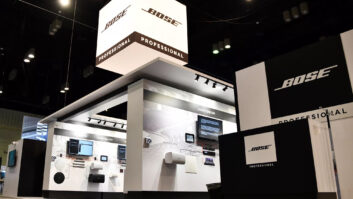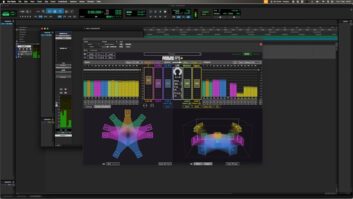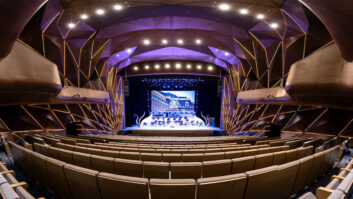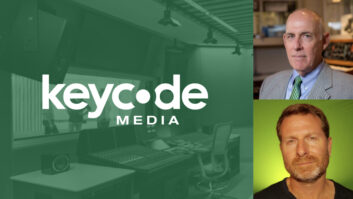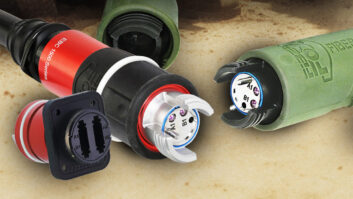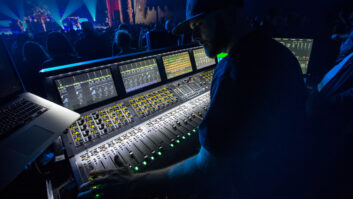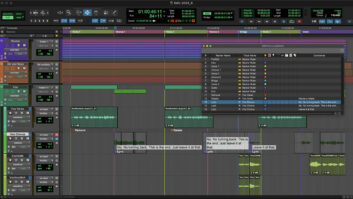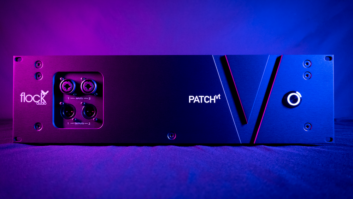N. HOLLYWOOD, CA—British Audio Engineering (BAE) recently expanded its base of operations, relocating to a commercial building in North Hollywood, CA. Once known as Brent Averill Enterprises, BAE is now focused on very faithfully reproducing some of the Class-A discrete audio circuit designs of the 1960s and ’70s, enhancing and repackaging a number of those classic designs to better meet the expectations of 21st century music creators.
The new location, two units in a brick-built commercial complex near the Burbank Airport flight path, has allowed the company to get more organized. One unit serves as offices, including a product display alongside photos and signed instruments donated by some of BAE’s high-profile clients (company president, Mark Loughman, a longtime musician, says he plays with some of them). The other unit houses the assembly, testing, warehousing and shipping departments.
Under Brent Averill’s ownership, BAE established a reputation as a prime source for classic Neve and other vintage audio modules, which were typically removed from aging mixing consoles, completely refurbished and repackaged in 19-inch rackmount units. Loughman joined BAE in 2001; at the start, he recalls, “Just learning from the ground up. In 2007, I was ready to go off on my own and form my own company. Brent realized he didn’t want to go back to work, so we made a deal.”
Working with Rupert Neve’s designs had brought BAE and Loughman a thorough understanding of those circuits. Around 2000, BAE became the first company since Mr. Neve’s company to build the classic 1073 and 1084 modules.
These Class-A designs were no longer being manufactured by the late ’70s. “Within 10 years, it becomes abandoned technology,” Loughman explains. Thus, even AMS-Neve restarted manufacture of those modules, BAE was already in production.
But what makes BAE’s products special, notes Loughman, is that the company was able to locate the manufacturers of the critical original components. Those included transformers from Carnhill (formerly St. Ives) and the all-important, gold-plated contact switches still being made by Elma in Switzerland. Some U.S. made Jensen transformers are used.
Every product is hand-wired. Loughman emphasizes that the Canford wiring looms introduce a certain capacitance into the circuit, critical to the accurate reproduction of the original product’s performance. Manufacture is contracted out to two local suppliers, and a handful of BAE employees handle final assembly, testing and shipping.
Once Loughman took the company over, he started to investigate how the designs might be adapted to suit 21st century production techniques and, working with Avedis Audio, they started to tweak some of the circuits.
For BAE’s 1028, for example, the EQ range of the 1073 was expanded to 28 switched positions. “The extra taps were available on the inductors on the 211 card, so we calculated the frequencies to expand the midrange and high frequencies,” he explains.
For the budget-conscious, BAE introduced versions of the 1073 that include mic pre/filter, in both single- and dual-channel versions. “A lot of people are using it as a saturation device to put the final mix through and warm it up,” he says of the 2-channel units.
Sales are strong worldwide, Loughman reports, especially in the U.S., as well as Germany and Scandinavia. The only barrier to growth is the ability of critical component suppliers to keep pace, Loughman says.
No one product is more popular than another, he observes. “With the price differences, that’s surprising. The 1028 and the 1023 are our unique models, and are deluxe versions of the 1073 and the 1084. In some way, they make them redundant, but because the 1073 and 1084 are such iconic numbers, they still sell, too.”
BAE (British Audio Engineering)
